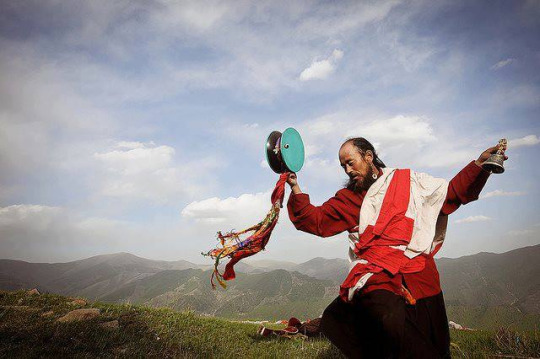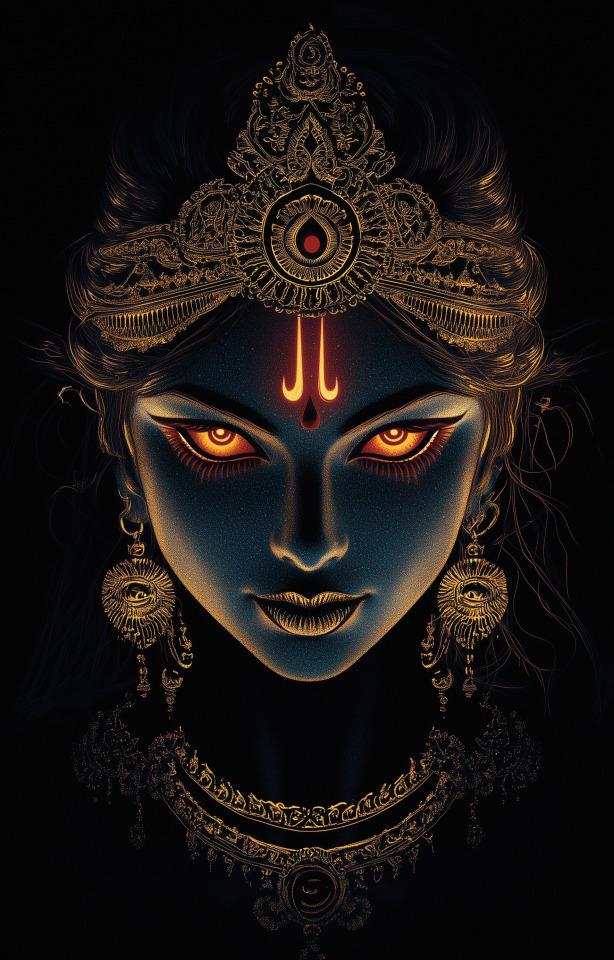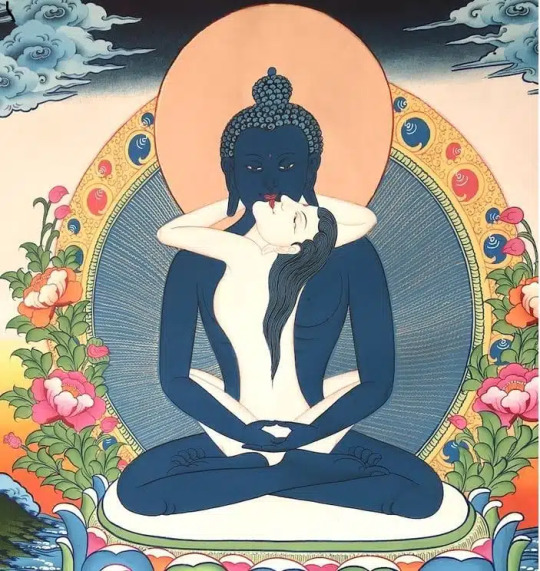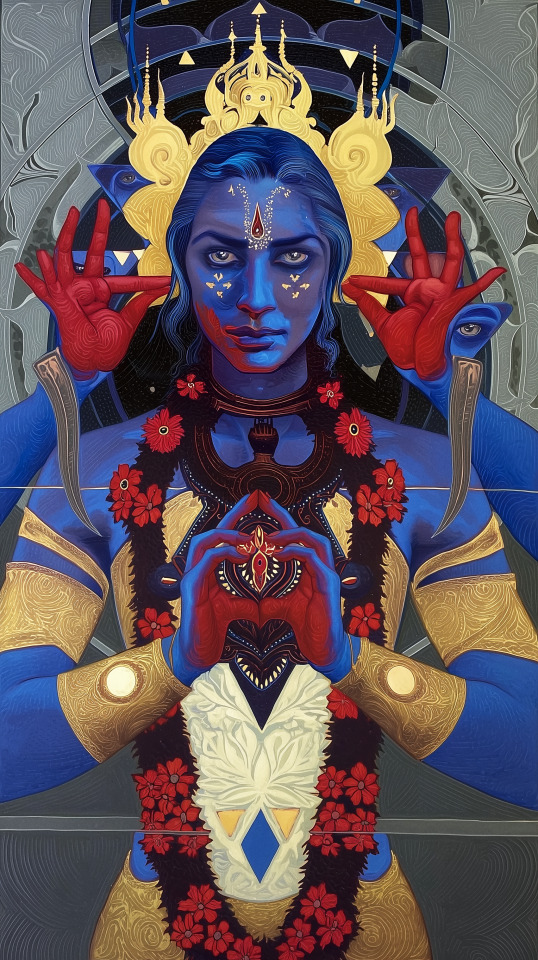#tantra practitioner
Explore tagged Tumblr posts
Text
#spiritual healing#devotion#healing#spiritual awakening#spiritual awareness#spiritual growth#spiritual journey#spirituality#spiritual life#kundalini yoga#yogadaily#yogalife#yogapractice#practice#practitioner#yoga#tantra#tantric#guru#online#class
2 notes
·
View notes
Text

Transform your life with Embodied Awakening Academy’s 18‑month Tantra Practitioner Training: 700 hrs online + optional Bali retreat to become a certified Tantra practitioner.”
#tantra online course#Tantra practitioner training#18‑month tantra certification#online tantra course#Bali tantra retreat#Certified tantra practitioner#Embodied Awakening Academy#sacred sexuality training#live online tantra program#tantric bodywork training#ethical tantra facilitation
1 note
·
View note
Text
The Unfurling of the Mantrayana Householder: An Exploration of the Role, Practices, and Life of a Ngakpa
Many of you ask me which kind of priesthood is mine, as Buddhism has different roles that can teach, lead a Sangha, and celebrate rituals. Image found on Internet Within the vast and variegated landscape of Tibetan Buddhism, beyond the well-trodden paths of monastic discipline and renunciation, lies the often-misunderstood yet profoundly potent tradition of the Ngakpa / སྔགས་པ (male) and Ngakma…

View On WordPress
#Buddhist philosophy#chöd#community#deity yoga#dream yoga#Empowerment#Esoteric#Guru#householder tantrika#inner transformation#lay life#lay practitioner#lineage#Mantra#monasticism#Mudra#ngak#ngakma#ngakpa#Nyingma#padmasambhava#Raffaello Palandri#ritual#samaya#six yogas of naropa#spiritual practice#Tantra#tantric practice#Tibetan Buddhism#tibetan culture
1 note
·
View note
Text
Sound In Magick

Sound has been used in magick and ritual practices across nearly every spiritual and mystical tradition, because it is one of the most primordial forces—vibrating through all levels of existence. In magick, sound is more than just a sensory experience; it is a tool of transformation, manifestation, and alignment.
The Foundational Principle: Vibration
In Hermeticism (especially the Kybalion), one of the fundamental laws is:
“All is vibration.”
Sound is vibratory energy, and when directed with intention, it can shift consciousness, environments, and outcomes.
Types Of Sound In Magick
Voice (Chanting, Speaking, Whispering):
• Chanting (mantras, divine names, affirmations)- Repetition of sacred phrases raises energy and focuses intent. Often used in Wicca, ceremonial magick, and Eastern traditions. Examples include “So mote it be,” “Om,” “Eh-heh-yay,” etc.
• Spoken Words / Enchantments- Words of power are believed to shape reality. The act of naming or commanding (e.g., “I banish thee…”) holds deep magical authority. In chaos magick, sigils are activated with spoken intent.
• Whispers or Breath Magick- Used in folk magick for secrecy or stealth (e.g., whispering into herbs or charms). Breath combined with spoken words transfers life force (prana, chi) into the object.

Musical Instruments (Drums, Bells, Bowls, Rattles):
• Drums- Used in shamanic and tribal traditions to induce trance states or call spirits. Beat mimics the heartbeat of the Earth—steady rhythm grounds and aligns.
• Bells- Clear stagnant energy and banish negativity. Used in ritual openings or closings. In some traditions, they “wake up” spirits or deities.
• Singing Bowls / Gongs- Create harmonic frequencies that balance chakras or sacred spaces. Used for healing, meditation, and raising vibrational resonance.
• Rattles- Shake up and move energy, break energetic blocks. Often used in indigenous or animistic practices.
Tones and Frequencies:
• Solfeggio Frequencies- Specific tones thought to heal, cleanse, and activate different aspects of being. Examples: 396 Hz (liberation from fear), 528 Hz (DNA repair, love).
• Binaural Beats- Used in modern magick to alter consciousness—help induce theta (trance) or gamma (mystic unity) brain states. Often paired with visualization or journeying practices.
• Harmonics and Drones- Used in eastern tantra and western esotericism to induce deep trance or inner stillness. Drones dissolve linear time, anchoring the mind in timeless space.

Music:
• Ritual Music- Custom compositions or ambient tracks are used to build atmosphere, open portals, and align energy with specific deities, elements, or spirits. Often employed in Wicca, ceremonial magick, and Thelemic rites.
• Personal Power Songs- In shamanic traditions, practitioners discover or craft a song that embodies their spirit or their intent. These are used in healing, travel, or battle.
Elemental Correspondences:
• Air- Whistling, flute
• Fire- Drums, crackling sounds
• Water- Singing, flowing melodies
• Earth- Deep tones, stomps, didgeridoo
Sound As A Magickal Tool
• Raising Power- Chanting or drumming raises a group’s energy (in coven or circle work) before directing it toward a spell’s goal.
• Trance and Meditation- Monotone chanting or rhythmic music slows the brainwaves and opens the door to altered states—critical for astral projection, pathworking, or deep magick.
• Clearing and Consecration- A bell, tone, or clap of sound can banish negative entities or cleanse tools, rooms, or auras.
• Invocation and Evocation- Sound acts as a call or signal—vocal invocation draws spirits, gods, or forces; sound shapes the subtle energy that forms the bridge between realms.
• Creation of Sigils and Talismans- Whispering intent or chanting during the crafting of a sigil or talisman imbues it with life—turning symbol into spell.

Cultural Examples
• Vedic Hinduism: The universe is created through sound (Shabda)—Om being the primal sound.
• Kabbalah: Hebrew letters are said to carry vibrational power. Vocalizing them in rituals opens specific spiritual pathways.
• Druidry: Bardic traditions hold that song and poetry are magickal acts that can influence minds, nature, and spirit.
• Voodoo / Afro-Caribbean Traditions: Drumming and song are essential to call the Loa or Orishas.
Sound Magick In Practice (Examples)
• Chakra Alignment with Vocal Toning- Toning “LAM,” “VAM,” “RAM,” etc., to align each chakra during ritual.
• Bell & Candle Banishing- Ring a bell three times around a space while intoning a banishing phrase.
• Trance Drumming- 4–7 beats per second drum rhythm to induce a shamanic state and journey to the Lower or Upper World.
• Mantra Spellwork- Repeating a deity’s name or power word (e.g., “Brigid,” “Awen,” “Lux”) while visualizing your intent.
Sound in magick is not just decoration—it is a primary force of will and manifestation. It bridges the seen and unseen, the body and spirit, intention and outcome. Whether through ancient chants, primal drumbeats, sacred names, or crafted harmonics, sound moves energy, and with it, the world.

#Sound#sounds#magick#music#witch#chants#trance#witchcraft#witchblr#incantation#incantations#Beats#binaural#frequencies#tones#esoteric#occult#eclectic witch#eclectic#pagan#spellcasting#spells#empowerment#enchantment#meditation#ritual#druidry#folk magic#witch tips#spiritual journey
70 notes
·
View notes
Text


There is an interesting similarity between Arwen's locket and the stone carving in the background. What did this locket mean to Arwen and Aragorn? In the film, they say this to each other: "You can't give me this!" "It is mine to give to whom I will, like my heart." Before all of this, Sauron stabs Galadriel above the heart. Is this all a coincidence? Not. This is a very strong parallel. And here's another one: After Arwen asks Aragorn if he remembers what he told her earlier. Aragorn replies: "You said you'd bind yourself to me." As others have said before me, Sauron bound Galadriel to himself with Morgoth's crown (and his own blood). And here comes the coiling serpent symbol that adorns Sauron's armor. Let's see what it means! In Egypt: Apep was an ancient Egyptian spirit of evil, darkness and destruction. It was a malevolent force that could never be definitively defeated. It was depicted as a coiled snake. India: Kundalini is a coiling snake, which is a symbol of the divine feminine energy. This female energy can lead to enlightenment if released in a tantric way. (One of the meanings of tantra is: chain. One of the characteristics of tantric yoga practitioners is the practice of tantric sex, in which the man comes to pleasure without consummation and they consume each other's body fluids, thus releasing each other's power). Christianity: The coiled snake is a symbol of Satan, the tempter. Black Snake: the color black symbolizes secrets, the invisible world, death and rebirth. The black snake often represents the depths and unseen forces. In some cultures, he appears as the angel of death.
In general terms, the snake is a powerful sexual, phallic symbol. It is also related to poison and poisoning.
In light of all this:
The dark love and marriage between Sauron (the dark angel, tempter, satan) and Galadriel (the being with the most feminine energy) was established. Sauron forcibly possessed Galadriel, who had already given her heart to him, Halbrand. Thus they united in the invisible world and became each other's, forever. And since Sauron is in fact indestructible, Galadriel will forever feel him within herself. Haladriel died and was reincarnated as Saurondriel.

#sauron#galadriel#galadriel x sauron#sauron x galadriel#saurondriel#the rings of power#haladriel#lotr on prime#rings of power spoilers
178 notes
·
View notes
Text

THE PIONEER
or
THE DIVINE MASCULINE
[reworked; old version can be seen in the previous postings]
60x80 cm
[available]
Inspired by a tantra practitioner and therapist who is for me the perfect example for someone who is living his true purpose, being in his fully self-empowered state. A pure "divine masculine", but also with his fully developed "divine feminine" side. It is pure bliss to meet such a person.
181 notes
·
View notes
Text

“Om Krim Kali”
Maha Kali ॐ Talon Abraxas
Kali is one of the many forms of Shakti. Maha Kaali is the fiercest of all goddesses of Hinduism. The word Kali has its roots in the Sanskrit word “Kaal”, which means time. And nothing escapes from time. Goddess Kali is sometimes referred as the goddess of death. But actually Kali brings the death of the ego. Even in the scriptures, she has killed demons but not anyone else. Kali is also not associated with Yama (the Hindu God of Death). Kali is considered a form of mother too.
Kali Maa: The Alchemist of Consciousness
In the esoteric heart of Tantric wisdom, Kali maa emerges not merely as a deity of destruction, but as the supreme alchemical force that transmutes the base metal of human ignorance into the luminous gold of enlightenment. Her fierce compassion serves as both crucible and catalyst in the most profound spiritual transformation possible.
The Alchemy of Being
As the Rasa Hṛdaya Tantra teaches: "Just as mercury purifies metals, Kali Maa's fire purifies the soul." Her blackness symbolizes the alchemical stage of dissolution, where identity must be broken down before rebirth becomes possible.
When she stands fierce as Dhosha Nasini, the Destroyer of Impurities, her Ugra Tejas (fierce radiance) consumes:
- The veil of ignorance separating self from cosmic unity - The binding chains of desire that trap consciousness - The paralyzing fear of death and impermanence
The Transmutation Process
The Rasarnava and Kalikularnava Tantras reveal the five fold alchemical journey under Kali Maa's guidance:
1) Murcchana: the liquefaction of ego-identity, where the practitioner surrenders to divine will.
2) Jarana: the purification where karmic residue burns away in her consuming gaze. 3) Bhavana: Kundalini awakens and ferments within, seeking liberation.
4) Paka: ordinary cognition ripens into transcendent wisdom.
5) Satva Patti brings perfection, the ultimate union with Siva, consciousness bliss beyond duality.
The Mercury and the Nectar
In this profound spiritual chemistry, mercury (Parada) symbolizes consciousness itself, fluid, quicksilver, elusive. Kali Maa, as Parada Devī, stabilizes this mercury, fixing the wandering mind into the philosopher's stone of enlightenment. Her lolling tongue, dripping with Amṛta, offers the nectar of immortality, the ecstatic reality beyond the cycle of birth and death.
48 notes
·
View notes
Text
+905332121405
Travel Gay
https://tr.travelgay.com › istanbul-...
İstanbul Gay Masaj Rehberi 2024 - yorumlar, gay haritası, bilgiler
İstanbul Gay Masaj Rehberi. İstanbul, Türkiye'deki en iyi gay masaj spa hizmetlerini bulun. Özel yorumlar, fotoğraflar, gay haritası, bilgiler.
Travel Gay
https://tr.travelgay.com › venue
Erkek Masör İstanbul Masajı - Eşcinsel dostu masaj İstanbul.
İstanbul, Türkiye'de Bay ve modaya yönelik çağrılı veya çağrı dışı masaj hizmetleri. Klasik, Şehvetli, Tantra, Tüm Vücut, Derin Doku ve Boyun ve Omuz ...
İstanbulgay massage services
İstanbulgay massage services
Google'da
Massages in İstanbul, İstanbul, Turkey Specializing in Deep Tissue
Gay Wellness is an online platform that connects clients with quality gay massage therapists and wellness practitioners. We are more than just a directory—we ...
RosetheGuide
2 Oca 2022 — Below we have listed the most popular Istanbul gay hamam which are often frequented by gay men – however, please practice discretion and care
including full massage service. Please click here for reviews, location map and other details. Istanbul Gay Beach.
LinkedIn
https://tr.linkedin.com › istanbul-ma...
istanbul masseur - Istanbul gay massage
İstanbul, İstanbul, Türkiye · Istanbul gay massage
+905332121405 Istanbul gay massage reviews, gay map, information. Istanbul Gay Massage Guide. Find the best gay massage spa services in Istanbul, Turkey.
Istanbul Male Massage
https://www.massageist.com › about
About | Istanbul Male Massage Therapist / Masseur
I am certified, male massage therapist. You can get in touch with me to get my service in my apartment or at your place.
https://twitter.com › status
مدلك في اسطنبول
28 Tem 2022 — istanbul #masseur #massage #turkey #gay #spa #travel.


#Istanbul gay massage#gay men#gayhot#gayboy#gay love#gayman#gayguy#gay#gay couple#gay tumblr#gay arab#Istanbul gay sohbet#aktif pasif arkadaşlık#aktif pasif gay#Istanbul gay#gay Istanbul
125 notes
·
View notes
Text
What Actually Transforms Us: Beliefs vs. Experience
A genuine transformation is like a bomb going off. The landscape is never the same afterwards. Or we may think of it as discerning the trick behind a magician’s illusion. Once known, it can’t be unseen. Similarly, transformation renders an enduring change that cannot be undone.
Rather than your beliefs, what matters is what you can experience. That is the pragmatic distinction between a practice path and the observation of a religion.
It is only the ego that weaves identities around religious or even spiritual beliefs.
Now, a spiritual practitioner may believe or trust that a set of teachings can be experientially verified through the technical application of their practices. But that practitioner must also understand that 1) having yet to experience it, the experience itself is nothing like whatever they might imagine, and 2) the belief is only there as a placeholder until the dawning of that experience.
A nice example of this would be the seemingly countless deities in buddhist tantra. These deities do not exist simply as an object for worship and prayer. In fact, they are not regarded as inherently existent outside of our own minds. The deities are utilized for spiritual practice, which is called deity yoga. For instance, one might practice with Avalokiteshvara in order to discover an experiential understanding of Compassion—an alchemical understanding that changes and opens one’s own heart.
To focus on venerating the beliefs rather than the experiencing result of its practice is like traveling by boat across the ocean to a distant land but then never leaving the boat.
If we are not being changed by the healing processes and awakenings of our path, then something is out of place. Either our understanding of the methods or the methods themselves are flawed.
All of this may sound a little dualistic and goal-oriented, and that’s because it is.
We may believe and therefore trust in the teaching that our nature is fundamentally divine, that our basic state is that of primordial radiance. But until that becomes our lived experience in every moment, there is still work to be done.
Beliefs may offer a temporary comfort, and a very fragile one and that. It is only our practice that yields sustainable freedom.
The question you must ask yourself is which of those two would you prefer.
70 notes
·
View notes
Text
The Art of Tantra Massage

The Art of Tantra Massage: A Gateway to Deep Healing and Connection
Tantra Massage is more than just a physical experience—it is a sacred practice that nurtures deep relaxation, intimacy, and spiritual awakening. Rooted in the ancient wisdom of Tantra, this transformative massage technique combines touch, breathwork, and energy flow to cultivate a profound sense of connection with oneself and others.
What is Tantra Massage?
Tantra Massage is a holistic practice that integrates mindful touch, energy activation, and meditative presence. Unlike conventional massages that focus solely on muscle relaxation, Tantra Massage engages the body's subtle energy centers, known as chakras, to release emotional and energetic blockages. This allows for a deeper state of relaxation, heightened pleasure, and a renewed sense of vitality.
The Benefits of Tantra Massage
Emotional Healing: Tantra Massage helps release stored emotions, past traumas, and stress, creating space for emotional clarity and freedom.
Deep Relaxation: The slow, intentional strokes combined with breathwork bring a state of deep relaxation, reducing anxiety and promoting mental peace.
Enhanced Intimacy: Whether received individually or as a couple, Tantra Massage fosters deeper emotional and physical intimacy, enhancing relationships.
Increased Energy Flow: By stimulating energy points and chakras, this practice awakens dormant energies and promotes a heightened state of awareness and pleasure.
Self-Discovery: Tantra Massage is a journey inward, allowing individuals to connect with their own sensuality, desires, and spiritual essence.
What to Expect in a Tantra Massage Session

A Tantra Massage session is a guided experience in a safe and sacred environment. It may include:
Gentle and mindful touch using warm oils.
Guided breathing techniques to enhance energy flow.
Chakra activation and energy work to restore balance.
Deep relaxation practices to dissolve stress and tension.
Every session is uniquely tailored to individual needs, ensuring a comfortable and enriching experience.
Experience Tantra Massage in India
If you are looking to explore the profound benefits of Tantra Massage, our experienced practitioners offer personalized sessions in India. Whether you seek relaxation, healing, or a deeper connection with your inner self, Tantra Massage can be a transformative experience.
Any female, male, or couple can book a session with us.
Connect with us on Telegram to learn more and book a session: Join Here
Embark on a journey of self-discovery, healing, and bliss through the sacred art of Tantra Massage.
#tantra #tantramassage #massage #intimacy #couple#sexy and beautiful #hot as hell #so hot and sexy #sexy pose #beautiful body #amazing body #india #mumbai #bangalore #ahmedabad
#bollywood#tantra#dailybollywoodqueens#tantramassage#massage#couple#intimacy#intimate#india#bollywoodedit#so hot and sexy#sexy and beautiful#ahmedabad#mumbai#bangalore
35 notes
·
View notes
Text

the yab yum (depicted above) represents the primordial union of compassion (male) and insight (female). the union of the two is necessary to attain enlightenment.
in tantra, it is also called the lotus pose and is a very popular tantric sex position that is alleged to produce heightened pleasure for both parties as it aligns all 7 chakras and creates increased awareness. tantric practitioners experience prolonged states of orgasm and this position is said to aid in it (along with other individual meditative practices)
122 notes
·
View notes
Text
I dislike the phrase "traditional witchcraft" in a language and cultural studies kind of way because like... Do y'all mean witch-cult? 'Cuz Margaret has been discredited over and over and over again.
Do you mean Wicca? Cuz that started in '54; as far as world religion, it's practically an infant. (Author bias note: I was raised in a Wiccan Cult from ages 2 to 12)
Do y'all mean Cochrane's craft? Cuz he was literally a High Priest of Gardner's Bricket Wood Coven (Which would make him an exWiccan or make it a denomination of Wicca instead of a completely separate faith)**
Well, maybe you mean Feri? Nope. That is widely considered a denomination of Wicca too, even by those who practice it.
Crooked Path/Sabbatic? Andrew Chumbley started practicing witchcraft in the 90s, his teachings are patchwork made of Tantra, voodoo, and Christ.ian doctrine... And imo, Christ.ianity is definitely not where witchcraft originated... AND it is also considered a denomination of Wicca by scholars but considered a completely separate religion by practitioners
Thelema was started by a very very rich Englishman after he was apparently visited by the Egyptian god Horus and a disembodied voice called Aiwass in 1907 which would make it the oldest in my list here, but the majority of the scholarly writing on Traditional Witchcraft I could find doesn't include Thelema and it is considered a separate New Religious Movement (NRM) entirely.
Britannica defines traditional as
1 a : based on a way of thinking, behaving, or doing something that has been used by the people in a particular group, family, society, etc., for a long time : following the tradition of a certain group or culture b : typical or normal for something or someone : having the qualities, beliefs, etc., that are usual or expected in a particular type of person or thing 2 based on old-fashioned ideas : not new, different, or modern
This definition feels fuzzy to me, because Neopaganism is definitely new and modern, right? That's what the prefix Neo- means
The only (reputable, published scholarly *) sources I can find basically sum up Traditional Witchcraft as just Wiccan. I have found some (published) sources saying it isn't Wicca, but they are far fewer in number and are religious works, not academic.
I am not a religious scholar. But Neopagan seems to be a much more accurate word to describe these organized practices -- Or does the existence of a Hierarchy and religious leaders makes it "traditional."
And... Neopagan is a very very very broad term, making it somewhat impractical to use as a label when looking for your communities/learning resources/supplies
In my search for information I found this quote from Kelden Mercury, author of The Crooked Path: Introduction to Traditional Witchcraft
“Traditional Witchcraft is an umbrella term that covers a vast array of non-Wiccan practices that are inspired by folklore. These practices may be viewed as religious or spiritual depending upon the group or individual practitioner. Traditional Witches focus on the use of magic, connecting with the natural landscape, and working with various spirits in both the physical realm and the Otherworld.”
But 1) every single other source I'm finding is calling it a branch of Wicca - because the core values originated within Wicca. And 2) it isn't traditional if every practitioner does it differently and 3) What folk lore? There's a lot. I don't know which culture is being referred to here 4) this sent me down a secondary metaphorical rabbit hole to find what "The Otherworld" is, because my only prior knowledge was from my Wiccan Coven upbringing, and in this context, I'm being told we are definitely not talking about Wicca - but we are getting off topic
I have come across one paper grouping all the practices I listed in this post together as "contemporary traditions," and Contemporary Traditional Witchcraft is a bit of a mouthful and possibly an oxymoron but it definitely makes more sense from the perspective of this language nerd. Someone needs to write more on this from a scholarly and historical point of view and I am almost certain I am far too undereducated to do it.
And now, I'm super hyper fixated on the cultural impact of various NRMs, Neopaganism, and modern religion in the west. I cannot afford more student loans but I desperately want to learn more. I might audit some classes just for the hell of it honestly. This is so fascinating at this point. Why isn't this stuff getting studied yet? Does anyone know Ethan Doyle White? Can you give him my email address? (this is a joke, he probably doesn't want to talk to me.) Belief in witchcraft as malevolent magic has been around since ancient Mesopotamia and I can find records of that... But I want to study the cultural impact of this religious movement and there just isn't enough literature to satisfy my inquisitive nature.
Someone smart should be writing this down, because seeing how it spreads and how different groups respond to the movement as a whole could really help historians understand the very very old dead religions, and their cultural impacts.

*I want to emphasize the word Scholarly. I said SCHOLARLY and I mean it. Witchcraft is something very difficult to find historically accurate information about.
** edit to correct pronouns; this information came from PUBLISHED SCHOLARLY ARTICLES. I am not asking you to explain Traditional Witchcraft to me as a practitioner. I am NOT asking to be converted to Wicca. I literally escaped a cult. Have some decorum.

[DISCLAIMER: I'm not arguing the validity of any of these religions, nor am I saying they are bad. Religion, in my opinion, is a good thing. I like paganism. It brings me comfort. This is my brain struggling with the verbage used and lack of written history. I have absolutely no ill intent, I'm just frustrated at the lack of historical records and the limits imposed on us by the English language.]
#witchcraft#religious studies at 2 am by myself with no professors#world religions?#neo paganism#lingustics#Why is the English language the way that is is??#i love the English language but i also hate it so much#long text post#text post#queued
22 notes
·
View notes
Text

Kali Maa: The Alchemist of Consciousness
In the esoteric heart of Tantric wisdom, Kali maa emerges not merely as a deity of destruction, but as the supreme alchemical force that transmutes the base metal of human ignorance into the luminous gold of enlightenment. Her fierce compassion serves as both crucible and catalyst in the most profound spiritual transformation possible.
The Alchemy of Being
As the Rasa Hṛdaya Tantra teaches: "Just as mercury purifies metals, Kali Maa's fire purifies the soul." Her blackness symbolizes the alchemical stage of dissolution, where identity must be broken down before rebirth becomes possible.
When she stands fierce as Dhosha Nasini, the Destroyer of Impurities, her Ugra Tejas (fierce radiance) consumes:
- The veil of ignorance separating self from cosmic unity - The binding chains of desire that trap consciousness - The paralyzing fear of death and impermanence
The Transmutation Process
The Rasarnava and Kalikularnava Tantras reveal the five fold alchemical journey under Kali Maa's guidance:
1) Murcchana: the liquefaction of ego-identity, where the practitioner surrenders to divine will.
2) Jarana: the purification where karmic residue burns away in her consuming gaze.
3) Bhavana: Kundalini awakens and ferments within, seeking liberation.
4) Paka: ordinary cognition ripens into transcendent wisdom.
5) Satva Patti brings perfection, the ultimate union with Siva, consciousness bliss beyond duality.
The Mercury and the Nectar
In this profound spiritual chemistry, mercury (Parada) symbolizes consciousness itself, fluid, quicksilver, elusive. Kali Maa, as Parada Devī, stabilizes this mercury, fixing the wandering mind into the philosopher's stone of enlightenment. Her lolling tongue, dripping with Amṛta, offers the nectar of immortality, the ecstatic reality beyond the cycle of birth and death. Source of Text: Hermit Sanʕ•́ᴥ•̀ʔっ She protects the good ones and slays the demons. She herself is all Darkness and Blue in color and only Darkness can fight the darkness. Goddesses are certain types of Shakti/Power in themselves.
She is the destroyer of our Ego, she is the destroyer of useless thoughts, and in the end she is pure love, unconditional love and she doesn't look like how we portray her, she loves us unconditionally and she saves us from the mire of Maya.
Mother Kali is the Ultimate Transformer!
Image: Goddess Kali - Ultimate Transformer Mahaboka
10 notes
·
View notes
Text

Śrīkālasaṁkarṣiṇī represents the very power of Cit, consciousness, to draw all phenomena back into itself. Her name, which means “the one who draws in or absorbs time,” speaks to her role not just as a destroyer, but as the devourer of illusion, the terminus of all karmic cycles, and the supreme feminine principle who alone can reveal the highest Self. She is Kālī, but in her most esoteric Shaiva form..less anthropomorphic, more like a force of sheer Svātantrya, or divine autonomy.
She is the very ground of liberation, a current that calls the practitioner inward to the deepest heart of consciousness, where duality dissolves. Her fierce grace is not chaotic or random...it is precise and purifying. In her presence, all temporal identities collapse. She unveils the one eternal identity that has always been: Aham, the I-consciousness, the divine "I am" of Śiva, not as something to be believed, but as something to be known, directly and bodily.
While I am a nondual mystic whose metaphysical orientation most closely aligns with Kashmir Shaivism and nondual Tantra, I engage with Christian mysticism and Abrahamic doctrine through this lens. From this perspective, Christ is not the son of God in the sense of being the only incarnation of divinity or the sole bearer of divine essence, but rather the one who fully realizes the truth of Svātantrya..divine autonomy - through Pratyabhijñā, the direct recognition that there is no separation between God and Self. The Christ becomes an archetype of the liberated being, a mirror for the process of self-recognition inherent to all.
In esoteric Christianity, the Virgin Mary is not merely a historical figure or maternal archetype, but a cosmic vessel of divine light, the Theotokos, the God-bearer. She does not just give birth to Christ externally; in the mystical imagination, she is the soul’s mother who births the Logos within the heart of the devotee. She is seen as the perfect receptacle of divine will..immaculate not merely in sinlessness, but in total openness to divine purpose. Her compassion is fierce, her purity a kind of luminous fire that prepares the soul to be wed to the divine.
Yet Mary alone is not the full picture. Christ, in his esoteric expression, becomes the Logos, the liberating gnosis, the embodied truth that awakens the soul from death and reunites it with the source. He descends into the underworld not only to conquer hell in a theological sense, but to retrieve the soul from the depths of illusion - just as Śrīkālasaṁkarṣiṇī does when she swallows time and illusion to reveal the eternally unbound Self.
When viewed through the tantric lens, these roles converge in Śrīkālasaṁkarṣiṇī. She is the mother who births the Self, like Mary. She is the liberator who shatters all bonds, like Christ. But she is more than their sum..she is the very power by which such manifestations are possible. In Tantra, the Divine Feminine is not passive or secondary. She is primary. She is both the substratum and the revelation. There is no liberation without her.
From this nondual understanding, the Christian Trinity finds deep resonance with the Trika foundation of Kashmir Shaivism. The Father reflects Paraśiva..the transcendent, formless Godhead beyond all attributes. The Son, like the realized individual in Trika, represents the embodiment of Cit that has awakened to itself. And the Holy Spirit..as the divine breath or inspiriting power - parallels Śaktipāta, the descent of grace, the Shakti that initiates recognition and transformation.
In Kashmir Shaivism, the process of liberation is not one of mere belief or faith, but of direct experience..Pratyabhijñā, recognition. It is to awaken as Cit, and this awakening is not cold or abstract - it is fiery, intimate, embodied. It comes as the kiss of Bhairavī, the cutting glance of Kālī, the soft explosion of the Spanda, the subtle pulse of awareness that underlies all movement. And Śrīkālasaṁkarṣiṇī is the great initiatrix into this fire of realization.
The Christian mystic may look to Mary for comfort and Christ for liberation. But the tantric, realizing no separation between God and Self, looks to Śrīkālasaṁkarṣiṇī to dissolve the final veil and grant the lived knowing of Svātantrya - the freedom to create, dissolve, and abide in one's own infinite being.
Thus, she is at once the womb of God, the destroyer of illusion, and the bestower of absolute sovereignty.
Aiṁ Hrīṁ Klīṁ Cāmuṇḍāyai Vicce
Om Kreem Mahakalikayai Namah
#esoteric#occult#hinduism#tantra#shiva#goddess#shakti#bhairava#spirituality#sanatanadharma#esoteric christianity#gnostic christianity#christian mysticism
13 notes
·
View notes
Text
Tantric synthesis
There's a heuristic coming along that feels close to something I've been wanting to find for a long time. It all comes down to hongaku (original enlightenment) on the one hand, and Tantric and theurgic non-dualism on the other hand, and from there I think I have a way of making some interesting connections possible.
When I read Hellenic Tantra during the last week or so I noticed that Gregory Shaw tries repeatedy to establish a connection between the concept of the theurgist and the jivanmukta at least on the grounds that both meant that the individual practitioner would become divinised while embodied and alive (though only fully joining the gods after death). Well, it turns out there's a Japanese Buddhist concept that's at least somewhat similar to the premise of the Tantric jivanmukta and Neoplatonist theurgy, or at least the way Shaw presents them. The Japanese term "sokushin jōbutsu" means to "become a Buddha in this body", and it seems to have originated in Shingon Buddhism.
"Sokushin jōbutsu" refers to the Shingon doctrine that buddha-nature could be realised in your own present lifetime, in your present body, in your present appearance (maybe now even). This idea is often attributed to Kukai, the founder of Shingon himself, who may have adapted it from Chinese esoteric Buddhism. Different versions of the concept were proposed by Saicho, another Shingon scholar, who accepted a partial realisation of buddhahood, and Annen, a Tendai scholar, who viewed it as the full attainment of buddahood in this life.
For Kukai this involved the practice of mudras, mantra recitation, mental concentration, and visualisations, which were supposed to lead to unification or mutual identity with the Buddha Mahavairocana. If this sounds like how Gregory Shaw talked about Tantra, well...
Maybe it's to do with the fact that Shingon has its roots in Tantric Buddhist traditions, or Kukai's own background in that tradition studying the tantras, or that at a certain point the Japanese concept of Mikkyo (esoteric Buddhism) generally denoted a kind of Tantric Buddhism. That Tantric Buddhism was also very obviously, to some extent, inspired by Hindu Tantra, with its inclusion of Hindu gods and often centrally centering the gods of Shaiva Hinduism. This seems to have been especially true for medieval Tendai given the role of deities like Mahakala and Kojin.
The doctrine of "sokushin jōbutsu" also seems to have involved collapsing any difference between physical and "ultimate" reality, the human body and the "dharma body", and positioning the body (and matter) itself as the site of realisation and a symbol of the entire universe. This form of nondualism probably did align with Tantric Hinduism to some extent. In fact, as Faure notes, Hindu Tantra itself developed from the Vedic tradition and inherited an originally Vedic conception of the human body as a microcosm of the universe.
It is on this basis that Tantra proposed the mutual identity of the human and the universe, and so Faure interprets Tantric Buddhism as having returned to the Vedic micro-macrocosmic vision. The Shingon doctrine of buddhahood involving Mahavairocana seems to match this vision. Faure also interprets this as a departure from earlier and more ascetic forms of Buddhism. In fact, he suggests that, in India, Tantric Buddhism assimilated the gods of Hinduism so successfully that it ended up losing distinctions from Hinduism, and folding back into Hinduism.
This obviously did not happen with Japanese or Chinese esoteric Buddhism. But, in Japan, Tantra can still be seen at the root of Mikkyo, and, as Nobumi Iyanaga observed, Shaiva Hindu deities played a special role in medieval esoteric Buddhism.
Both Tendai and Shingon are accepted as developments of Tantric Buddhism, in the sense that esoteric Buddhist derived from the larger Tantric tradition, and in that sense it seems the concept of hongaku seems was just part of Japanese Tantric Buddhism.
Although the formal concept of original/innate enlightenment did not originate (at least in these terms) in Tantric Hinduism, it seems to have definitely been part of the Tantric Buddhist milieu in Japan. And if you think about it, that makes sense given the logic of hongaku. Tendai hongaku establishes a collapse of the boundaries between ignorance or passion and enlightement or dharmarata, and therefore the distinction between the demons and the buddhas/gods, but it also logically connects to Mikkyo notions of matter as a symbol of the universe or the Buddha-mind. In that sense, it's hard to not connect hongaku to Tantric philosophy and its nondualist logic. And from there you can access the larger significance of the demon gods in Tantric terms. I'd even argue you have all you need for a kind of "Tantric synthesis".
And what's more, you can get to a sense of that kind of cosmic vision in the way Shaw describes theurgy or for that matter its goetic origins and correspondence as elaborated by Kent, and then there's extent to which can actually apply them to each other. After all, in pagan Neoplatonism, the body of the theurgist, while embodied and alive, is to be figured as a synthema for the divine or the creative activity of the Platonic Demiurge or Helios, and in a way you can kind of parallel that with what sokushin jōbutsu entails.
What comes next, of course, is the erotic significance. In Japan, Tantric esotericism that at least allegedly involved outright sexual rituals was called sadō mikkyō, which basically meant heterodox esoteric Buddhism, or "left-handed esotericism", as in the Left Hand Path. That the Left Hand Path should be directly defined by eroticism or sexual ritual is not surprising: it logically follows from the way the terminology was applied in Hinduism. But, in Japan, it also allowed some esoteric Buddhist schools to single out their rivals as heretics. It probably also dovetails nicely with efforts of some schools to define themselves as "pure" schools, focused only on Buddhahood, as opposed to "mixed" schools, allegedly only focused on worldly goals: a line functionally identical to Iamblichus' on theurgy versus goetia.
But this is an area where, real or imagined, the Left Hand Path points to the possibility of religious and magical eroticism as a vital if not fundamental element of the body as the site of spiritual realisation, which is critical to understand socially as a realm of freedom. The heuristic of "Tantric synthesis" here would function as a backdrop for the Left Hand Path as a pursuit of supra-cosmic individualism through an autonomous embrace of eroticism and mystical transgression, divinising the self by collapsing extant normative distinctions.
#tantra#tantric hinduism#tantric buddhism#esoteric buddhism#japanese buddhism#shingon#tendai#left hand path#buddhism#hinduism#neoplatonism#paganism#theurgy#hongaku
22 notes
·
View notes
Text

Why Do So Many Men Hate Women, and Why Do So Many Women Hate Each Other?
A question from our Sangha: "Dear Lama la,
Why do so many men appear to hate women, and why do so many women seem to completely hate other women, especially those who seem conventionally successful?"
This is a complex and sensitive issue. To explore it deeply, we'll look at concepts from Jungian psychology and Buddhist teachings over the next several posts and comments section. You are invited to participate. Let's take a compassionate approach to these difficult questions.
In Jungian psychology, each person has an "anima" (inner feminine) and an "animus" (inner masculine). When these parts of us are ignored or suppressed, they can create harmful projections onto others.
For men, a wounded anima might lead to projecting negativity onto women, breeding resentment or idealization that turns into disappointment. For women, a disconnected animus can foster competition with other women instead of solidarity.
Understanding these inner dynamics can help us find balance and reduce conflict with others.
Jungian psychology also teaches about the "shadow" —the parts of ourselves we reject. Society often values masculine traits like assertiveness and downplays feminine ones like nurturing, pushing these qualities into our "shadow."
This repression can lead to hostility. Men who reject their inner feminine may project negativity onto women, while women pressured to conform to ideals might criticize those who don't fit in.
Healing involves embracing our shadow and reclaiming these neglected qualities.
Modern culture often reinforces rigid ideas of masculinity and femininity. Men are discouraged from exploring empathy or sensitivity, leading to discomfort around women who embody these traits. Women, meanwhile, are encouraged to see each other as rivals rather than allies.
This conditioning fuels competition, rivalry, and resentment. Moving beyond these stereotypes allows us to see each other more fully, respecting both masculine and feminine qualities.
Healing Through Buddhist Tantra
Buddhist Tantra encourages moving beyond rigid gender boundaries. In Tantra, wisdom (feminine) and compassion (masculine) are seen as interconnected, complementary aspects of wholeness.
Tantric practices teach us to integrate these qualities within ourselves, helping men and women cultivate both strength and empathy.
By seeing masculine and feminine as equally valuable, we reduce the need to project our expectations onto others.
In Buddhist Tantra, visualizations of deities in union, called yab-yum (father-mother), symbolize the unity of wisdom and compassion, masculine and feminine.
Meditating on these deities helps us internalize a balanced perspective, transforming how we relate to ourselves and others. We start to see others not as opposites but as partners in embodying wholeness.
Buddhist Tantra doesn't suppress emotions like anger, jealousy, or desire. Instead, it transforms them: anger into clarity, jealousy into appreciation. This approach allows us to face our emotions rather than projecting them onto others.
By learning to purify negative emotions, we build a deeper respect for both feminine and masculine qualities in ourselves and others.
Tantra celebrates powerful female figures like Tara and Vajrayogini, who embody wisdom, compassion, and transformation. Male practitioners connect with these deities, healing any negative views toward the feminine. Female practitioners connect with male deities to strengthen power and clarity.
This practice helps both genders integrate qualities traditionally seen as "other," leading to a more balanced self.
Tantra sees the body as a sacred vessel, not something to deny or degrade. This respect for the body encourages a deeper respect for both masculine and feminine forms in all their expressions.
By valuing the body and its energies, we heal distorted projections that lead to misogyny or self-criticism, allowing us to appreciate each other more tully.
Tantra includes daily practices to integrate these insights, guiding us to see all beings as embodying enlightened qualities. By viewing each interaction as sacred, we reduce judgment and embrace empathy.
This perspective fosters unity, helping men and women to see each other as reflections of wisdom and compassion. This mutual respect creates harmony within and around us.
In Buddhist Tantra, true healing lies in embodying both feminine and masculine energies within. By integrating these principles, we dissolve insecurities and move beyond rivalry or resentment.
This journey invites men and women alike to find wholeness within, fostering a compassionate world where divisions based on gender begin to dissolve.
May this be of benefit
#buddha#buddhist#buddhism#dharma#sangha#mahayana#zen#milarepa#tibetan buddhism#thich nhat hanh#tantric#enlightenment spiritualawakening reincarnation tibetan siddhi yoga naga buddha#tantra#amitaba buddha#amitabha#sukhavati#dewachen
18 notes
·
View notes